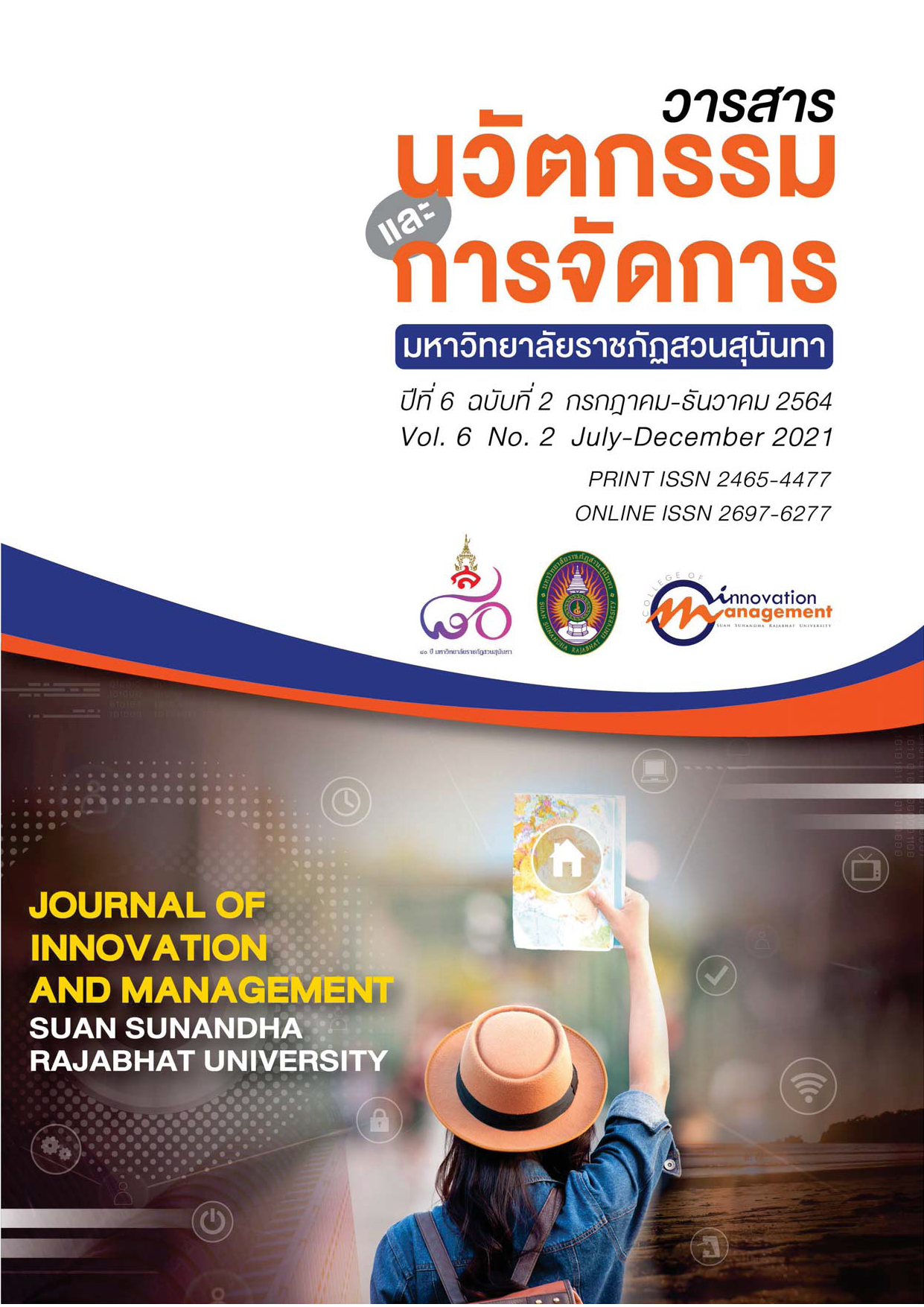Cultural Landscape of Hot Springs Toward Health Tourism and Recreation in Kanchanaburi, Thailand
Keywords:
Cultural Landscape, Health Tourism, Hot Spring, Kanchanaburi, Thong Pha PhumAbstract
The paper examined the significance and focused on two hot spring sites: Hin Dad and Lin Thin hot springs in the watershed called ‘River Kwai Noi Watershed of Thong Pha Phum' in Kanchanaburi. The main purpose was to investigate the potential of the hot spring cultural landscape to cater to health tourism and recreation. The recommendation for sustainable development of hot spring destinations has been proposed at the end. The significance was identified through five values: aesthetic, historic, scientific, social, and spiritual values accordingly. The research was studied by a combination of tools of qualitative research methodology: field study, semi-structured interview, focus group, and participant observation. The major finding showed the impact of hot springs on health and recreation. The harmonious relationship found between hot springs and Thong Pha Phum communities with their potential relevance of driving environmental sustainability. A key symbol of their cultural heritage continues to shape their cultural norms of health promotion. Socializing and talking among the community members at the hot springs, can help them stay healthier because they keep encouraging each other and share their local wisdom practices. Hot springs are regularly served for senior citizens without surcharge, they then contribute to their ecological sustainability by ensuring cleanliness and sanitation at the sites as well as regulating the human activities that would damage the hot springs. This shown that elderly people themselves having the role to audit the standard of hot springs. The author's interest in hot spring and spa sectors may motivate health tourism to some degree and drive Thai hot spring destinations, spa business, and community-based tourism.
References
Australia ICOMOS. (1997). The Burra Charter: The Australia ICOMOS Charter for place of cultural significance 1997. [Online]. Retrieved 10 May 2017, from: http://australia.icomos.org/wpcontent/uploads/BURRA_CHARTER.pdf.
Australian War Memorial. (2021). A Better Type of Jungle Camp on The Burma-Thailand Railway. [Online]. Retrieved 9 January, 2021 from: https://www.awm.gov.au/collection/C48397?image=2
Bjelland, D. M., Montello, R. D., Fellmann, D. Jerome, G. A., and Getis, J. (2013). Human Geography Landscapes of Human Activities. 12th ed. New York: McGraw-Hill.
Chatnarat, P., Karchung, K. (2019). The Traditional Studies of Jivaka Komarabhacca: The Buddha’s Doctor in Theravada and Bhaisajyaguru. The Medicine Buddha in Vajrayana. The Journal of The International Buddhist Studies College (JIBSC), 6(1), 93-110.
Department of Entomology. (2021). Ecosystem Services, Native Plants and Ecosystem Services, Michigan State University. [Online]. Retrieved 2 January 2021, from: https://www.canr.msu.edu/nativeplants/ecosystem_services/
Gesler, W.M. (1993). Therapeutic Landscapes: Theory and a Case Study of Epidauros, Greece. Environment and Planning D: Society and Space, 11(2), 171-189. doi:10.1068/d110171
Hoi An Protocols for Best Conservation Practice in Asia. (2005). Professional Guidelines for Assuring and Preserving the Authenticity of Heritage Sites in the Context of the Cultures of Asia. [Online]. Retrieved 9 January 2018, from: http://unesdoc.unesco.org/images/0018/001826/182617e.pdf
Jumnongrasme, S., Keeratipongpaipul, T., and Chumpunya, K. (2015) Development Guideline of Natural Hot Spring for supporting National Health Tourism. Economic and Social Journal, 52(1), 17-25. (in Thai)
Kaya, G. L. (2002). Cultural Landscape for Tourism. [Online]. Retrieved 7 October 2020, from: http://bof.bartin.edu.tr/journal/1302-0056/2002-03-04/2002/Cilt4/Sayi4/54-60.pdf.
Khamchompoo, S., Thongpakdee, A. (2005). Plant Research in Western Thong Pha Phum Project. Journal of Thai Forest, 33, 99-109. (in Thai)
Knox, P. L. and Marston, S. A. (2014). Human Geography: Places and Regions in Global Context. 6th ed. Essex: Pearson Education.
Liamputtong, P. and Suwankhong, D. (2015). Therapeutic landscapes and living with breast cancer: the lived experiences of Thai women. Social Science and Medicine, 128, 263- 271. (in Thai)
Ministry of Tourism and Sport Thailand. (2014). Guideline for Quality Evaluation of Health Tourism. Bangkok: Department of Tourism, Office of Printing Affairs, the War Veterans Organization of Thailand under Royal Patronage. (in Thai)
National Park Service, the Department of Interior. (1994). Cultural landscapes. [Online]. Retrieved 31 January 2018, from: https://www.nps.gov/tps/how-to-preserve/briefs/36-cultural-landscapes.htm
National Park Service, the Department of Interior. (2020). Cultural landscapes. [Online]. Retrieved 31 August 2020, from: https://www.nps.gov/yell/learn/historyculture/cultural-landscapes.htm
Nelson, J. B. (2019). The end of World War II, P.o.W. report written by P.o.W survived from the war after they returned home. [Online]. Retrieved 22 July 2019, from: http://www.mansell.com/pow_resources/camplists/death_rr/THAILAND_Death_roster_ Camps_Report_RG389Bx2155.pdf
Piesse, D. (2017). ‘Quiet Lion’ Tour Report 2017. [Online]. Retrieved 24 May 2019, from:http://www.btrma.org.au/?p=1254
Rattanawong, T., Bissen, R., Kumpairoh, W., and Chawchai, S. (2020). Geochemical Characteristics of Three Hot Springs from Western Thailand. Applied Environmental Research, 42(1), 101-113. (in Thai)
Shimokawa, K. (2019). From Hot Springs to Art Japan’s Bath Culture, Cabinet Office of Japan, issue 130, March, 2019. [Online]. Retrieved 11 January 2021, from: https://www.govonline.go.jp/pdf/hlj/20190301/20190301all.pdf
Sitthisajattham, S. (2012). Orchid of Thong Pha Phum Lion, Department of Forest Biology, Kasetsart University. [Online]. Retrieved 31 August 2019, from: http://www.orchidtropical.com/bulb-reichenbachii.php
Secretary of the Interior’s Standards. (1996). Treatment of Historic Properties and the Guidelines for the Treatment of Cultural Landscapes for ‘Water Features Cultural Landscapes. [Onlilne]. Retrieved 8 August 2017, from: https://www.ncptt.nps.gov/articles/c2a/guidelines-for-treatment-of-cultural-landscapes/
Zhang, Q., Kim, E., Yang, C. and Cao, F. (2021). Rural revitalization: sustainable strategy for the development of cultural landscape of traditional villages through optimized IPA approach. Journal of Cultural Heritage Management and Sustainable Development, 2044-1266. https://doi.org/10.1108/JCHMSD-09-2020-0130.
Downloads
Published
How to Cite
Issue
Section
License
Copyright (c) 2021 Journal of Innovation and Management

This work is licensed under a Creative Commons Attribution-NonCommercial-NoDerivatives 4.0 International License.
See Publication Ethics https://so03.tci-thaijo.org/index.php/journalcim/Ethics






